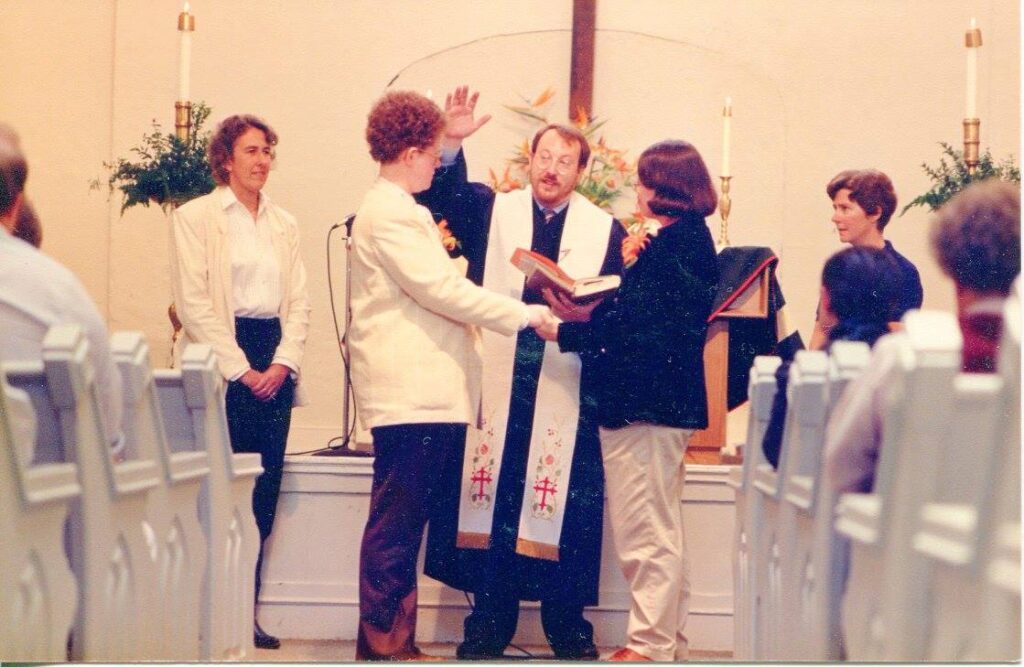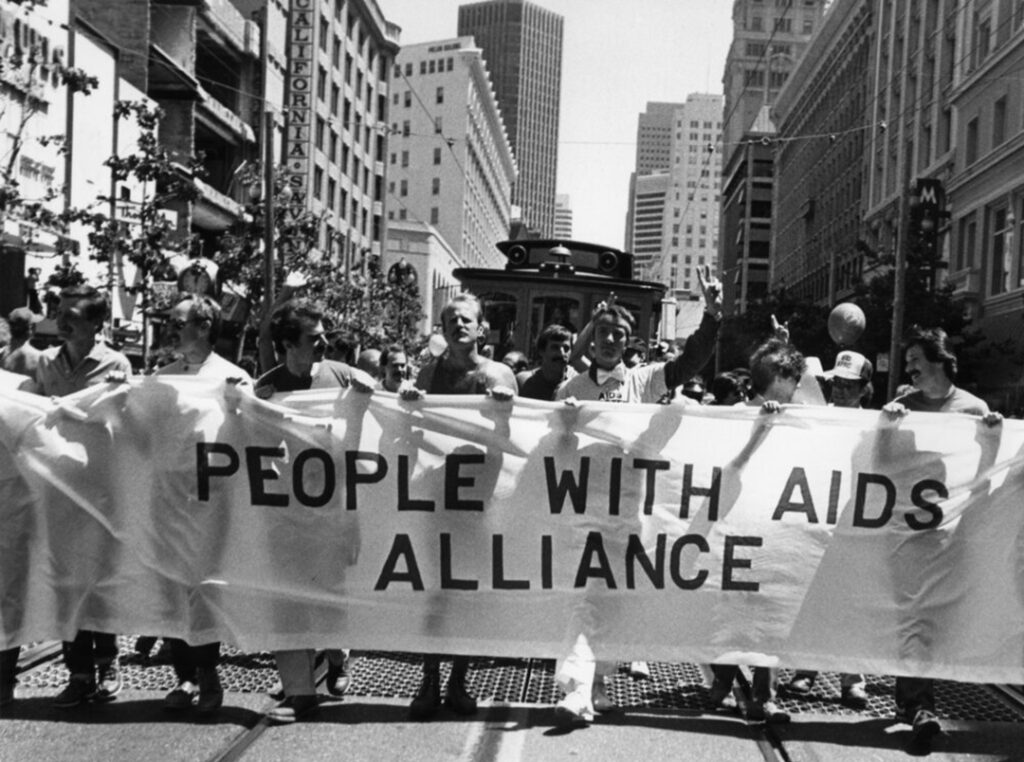5
An intertwined struggle was over whether gay men and lesbians formed a lesbian/gay community with a common culture, or whether they were too different, or too estranged, to create a shared life. Today we think of LGBTQ as one category, but in the 1970s, gay men and lesbians often existed in two separate worlds. While facing similar forces of repression, they didn’t always see themselves as having common interests. And bisexual and transgender people fought for basic visibility in a community that often saw the world as a gay/straight binary. Forging queer community was part of the work of a congregation like MCCSF, work that was always provisional, fragile, and under threat by social forces that worked to pull the LGBTQ community apart.

Holy Union of Kittredge Cherry and Audrey Lockwood, officiated by Rev. Jim Mitulski, April 11, 1987. Photo by Lisa Wigoda. Courtesy of the Kittredge Cherry and Audrey Lockwood Collection.
6

People with AIDS contingent, San Francisco Gay Freedom Day Parade, June 1983. Photo by Marie Ueda. Courtesy of the Marie Ueda Collection, Gay, Lesbian, Bisexual and Transgender Historical Society.
AIDS appeared early in the administration of President Ronald Reagan, a conservative regime committed to cutting back the role of government in American life, which largely ignored or underplayed the new disease. The administration was brought to power by a newly emboldened religious right, leaders of which saw the disease as God’s rightful punishment for the “sin” of homosexuality. In addition to the disease itself, people and communities affected by it had to fight political battles to access state resources to address the disease, cultural battles countering the stigmatization of people with AIDS, and often personal ones about what contracting the disease did and did not mean about their human worth. It took years for HIV to be identified and treatments to be developed, years in which gay communities and communities of color were ravaged while much of the rest of the country barely took notice.
San Francisco was one of the three hardest hit cities in the country, and the Castro was its epicenter. Its neighborhood church became the place where the community gathered to share information about the new disease, start organizations to respond to it, tend to the sick, bury the dead, and comfort the grieving. MCCSF, the Pink and Purple Church in the Castro, soon became the church with AIDS.